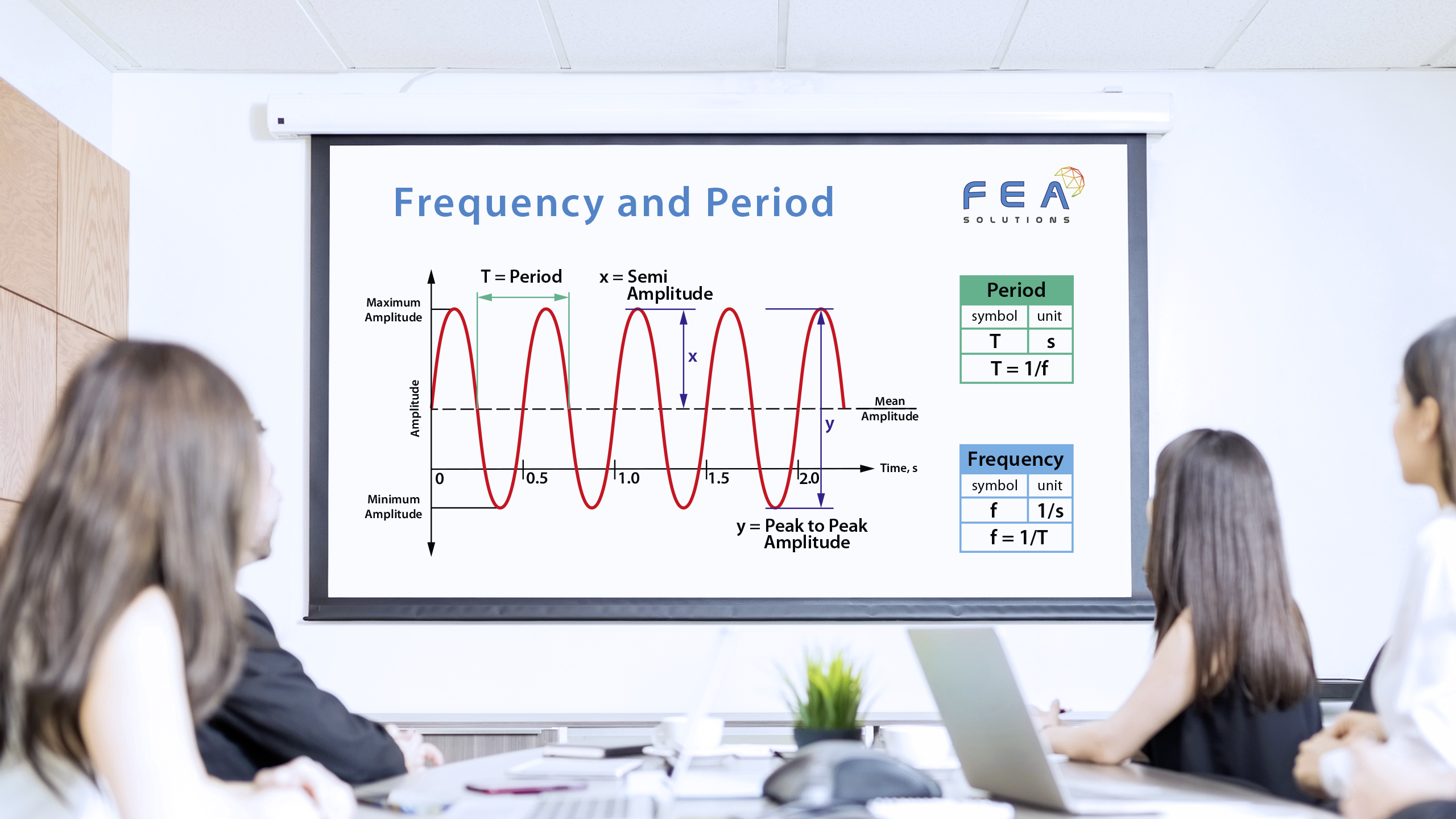
07 Feb Frequency and Period
For all Dynamic Analyses, the input or output will concern the vibrations of a system. These vibrations will have a characteristic frequency and period associated with them.
The Period (T) of the system is the amount of time it takes to oscillate once. The unit used is most commonly seconds. The Frequency (f) is the number of times the system oscillates per unit of time, with the unit being 1/s, previously called Hertz (Hz). Another common unit of frequency is revolutions per minute (rpm), commonly used to describe the frequency of rotating bodies. 60rpm is equal to 1/s .
As described above the relation between Period and Frequency are the following: T=1/f f=1/T
The amplitude of a vibration can be referred to as the peak-to-peak amplitude, or the semi-amplitude. The peak-to-peak amplitude is the difference between the minimum and maximum values a vibration oscillates to, whereas the semi-amplitude is simply half the peak-to-peak value.
The amplitude at which the frequency acts is the magnitude at which the load in an FEA model can be applied. For example this can be a force, pressure or thermal load.
Please call us today on +44 (0)1202 798991 for any engineering analysis requirements you might have.
